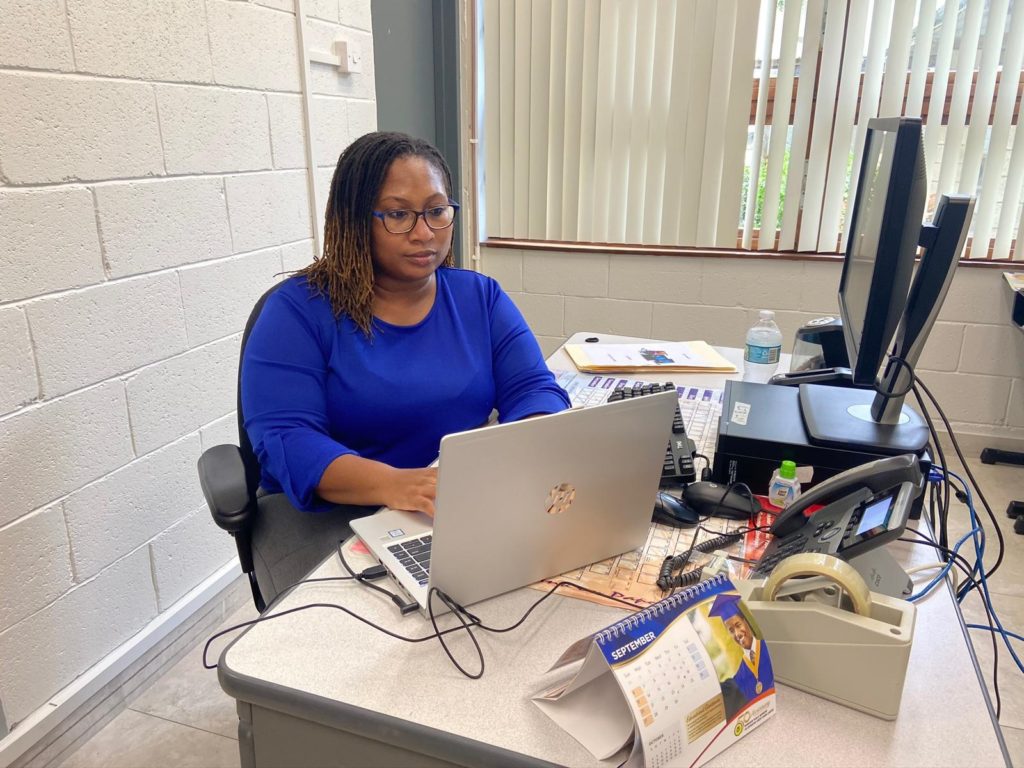New Voices RGU Student Series – Kahdia Jordan
Category: New Voices, New Voices, RGU Student Series
In the Robert Gordon University Student Series blog, we share the views of RGU students from the MSc in Information and Library Studies course.
Today, we hear from Kahdia Jordan, a library assistant in a TVET library in Barbados who is currently pursuing an MSc in Information and Library Sciences online at RGU. Kahdia’s passion for education and fostering the success of the students and instructional staff for whom she is responsible has led her down this path of study. She is also a lover of animals, reading, cooking and travel.

In Kahdia’s blog, she discusses digital literacy and the vital role of academic library staff in continuing to promote it as their institutions shift towards blending learning models.
Digital Literacy and the post COVID-19 Higher Education Institution
According to Hobbs (2010) digital literacy (DL) is “a constellation of life skills that are necessary for full participation in our media-saturated, information-rich society” (pp. vii). DL requires an individual to have the ability to locate, organize, understand, integrate, communicate, evaluate, and create information safely and appropriately using digital technology, and manage their digital identities. UNESCO (2018) posited that DL also includes competencies such as computer literacy, ICT literacy, information literacy and media literacy.
COVID-19 has caused changes to the way we do things on a day-to-day basis, including us not being able to socialize as we would like with family and friends to try to “flatten the curve” of the virus. People with underlying or pre-existing conditions and the elderly were noted to be the most susceptible to the virus, and so, to protect them, it could not be business as usual. Higher Education Institutions (HEIs), along with other educational institutions closed their physical campuses to adhere to the social or physical distancing protocol that became the new norm to slow the spread of the outbreak and protect the vulnerable in society.
However, have you ever wondered what will happen to these institutions as the curve is flattened and schools re-open? Some countries are already at that point, and they have adjusted the way they offer instruction, opting to utilize a blended learning approach in lieu of solely face-to-face programme offerings. Blended learning refers to the teaching strategy where face-to-face instruction is mixed with online learning (Tang & Chaw 2016). This approach gives the benefit of minimizing the amount of interpersonal contact during teaching, and from a pedagogical perspective, it allows the student to take more control of their learning (teaching becomes more of a partnership than a “do as I say”) as it allows for the creation of a flexible learning environment. In order to gain success through the use of this approach, there must exist: a knowledge of technology; critical thinking skills; understanding of how to find and utilize information responsibly; the comprehension and communication of learnt information; and finally, the creation of a collaborative environment comprising teacher, learner, content, technology, learning support and institution.
In the collaborative environment required for success in blended learning, the academic library is tasked with providing the learning support. Success in blended learning is contingent on the collaborative environment’s grasp of digital literacy, so the HE library must ensure that this is fostered and supported. This support does not just extend to academic support, but also technical support with regard to the other aspects of the collaborative environment. This means that they need to stay abreast of the “fast-changing external technological environments as wells as constantly evolving digital landscapes of their own working contexts” (Martzoukou & Elliott 2016, p. 100). This augers well for when they are providing input on the content housed within the institution’s curriculum and the materials needed to facilitate learning; it allows them to also modify or create functions for existing technology e.g. designing an app to improve the circulation process (reinvent the wheel). Additionally, libraries had already taken the step to digitize their collections before COVID-19 (Rosen 2020), thereby showing initiative in using technology in creating an avenue that makes it easy for them to supply research materials to those who are utilizing blended learning.
In addition to the advancements in technology, academic library staff must also make sure that they engage in lifelong learning that will allow for them to keep up with DL transferable skills, knowledge and techniques such as professional ethics and prevailing service norms; methods of assessing and evaluating the specifications, efficacy, and cost efficiency of technology-based products and services; and the how and whys for implementation of technology-based products. The academic library staff should also take a leadership role in educating students and staff about not just how to use technology, but how to use it responsibly, and finding ways to familiarize them with the digital environment by conceptualizing and delivering programmes and workshops to train and sensitize them.
The literacy needs of the higher education student are ever changing. However, one thing is certain, in order for them to be successful using the blended learning method post COVID-19, they are going to need support from library staff that are competent in digital literacy. Cognitive and technological skills are pivotal for navigating the digital world in a safe and productive way, to ensure that those in the collaborative environment essential to blended learning will be able to see the end goals of academic success: good digital citizenship and entrepreneurship.